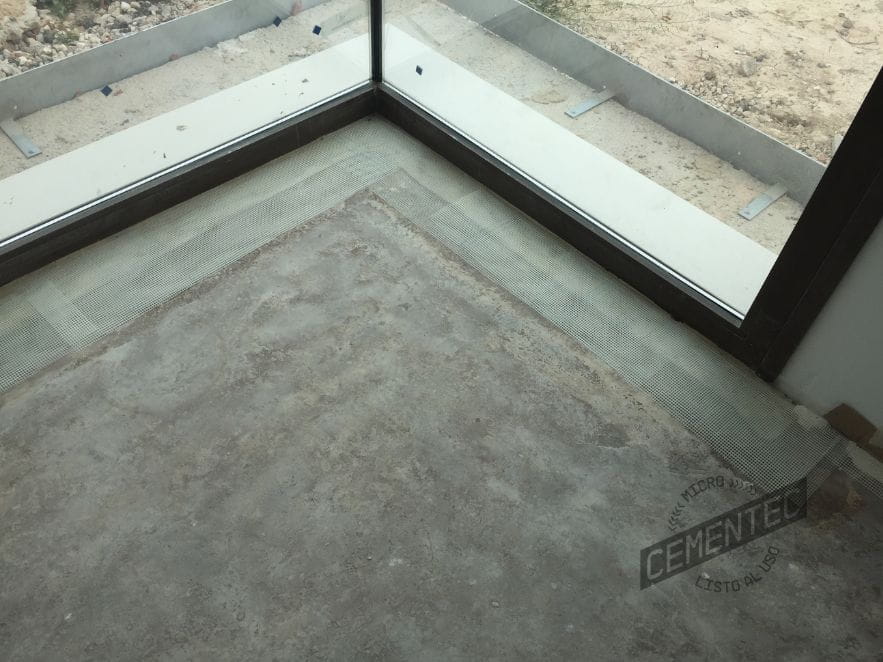Microcement has become a modern and versatile choice as a decorative coating in contemporary homes. Despite its many advantages, homeowners who have opted for this finish may face an unexpected problem: the appearance of fissures on the surface of the microcement. You can be worried about this situation because it affects to the appearance of a result that was initially impeccable and without imperfections. This leads us to question: how and why do these cracks occur?
The appearance of cracks in microcement can be the result of various factors, and sometimes these causes can be difficult to understand. For it, it’s important to know the reasons which are behind this problem for to be able to address it effectively and resolve it satisfactorily.
If you find yourself in the situation of dealing with cracks in your microcement, you are in the right place. In this Cementec article, we will provide you with valuable information about the causes behind the appearance of cracks and we will offer you effective solutions to address this problem. Through proven tips and solutions, you will learn how to preserve and restore the beauty of your microcement, ensuring it continues to be an attractive and long-lasting choice in your home.
Can you come with us?
Why does microcement crack?
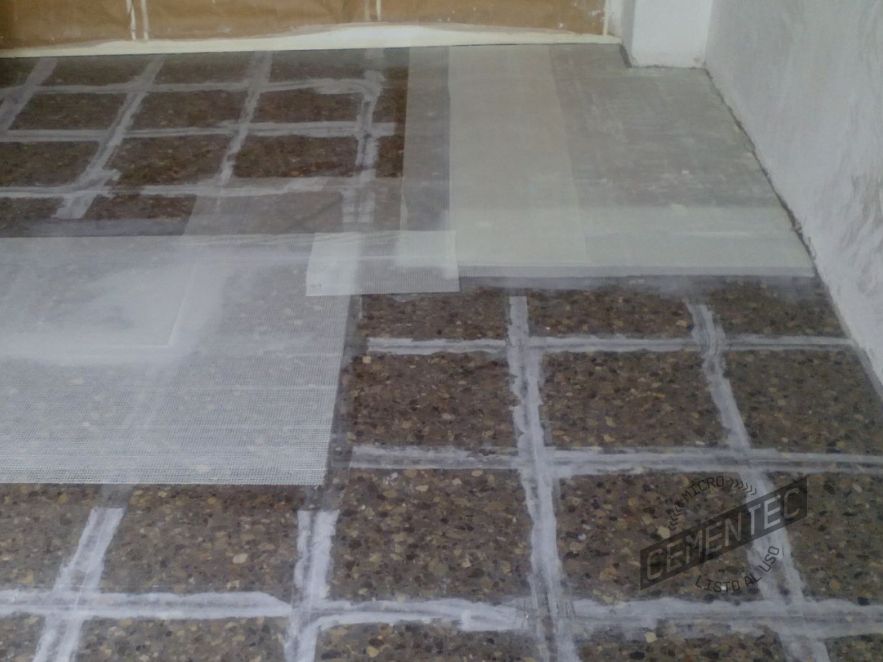
Fissures in microcement can be the result of a series of several factors and causes. Below, it is detailed some of the common causes, with a brief explanation, that can affect to the appearance of cracks in microcement:
- Structural movements: movements in the structure of a building or its foundation can generate excessive pressure on the building’s construction elements, and consequently be transmitted to its coatings, in this case, the microcement, which can result in cracks. These movements can be caused by natural settlements, vibrations, changes in temperature or humidity, among other factors.
- Poor prior preparation: incorrect preparation of the surface before applying ready-to-use microcement is one of the main causes of the appearance of cracks. Previous work must always be undertaken.
- Errors in application: errors in the application process, such as a layer that is too thick, can contribute to the formation of cracks. The quality of the materials and the experience of the applicator also play a crucial role.
- Previous surfaces instability: if the previous surface on which the microcement is applied is unstable or not properly anchored, any movement in it can result in cracks.
To sum up, cracks in microcement can be produced by different causes, from a bad application to structural problems. It is basic to look for the underlying cause to deal effectively with this problem and guarantee the durability and attractive appearance of microcement as a decorative solution. Click in this link to know other issues that can affect the microcement.
Tomás Amat, architect, creative and manager of Cementec
What happens if microcement wets?
When delving into this aspect related to humidity, it is essential to highlight that, if the microcement is in a situation of constant exposure to water without receiving due care or without having applied the correct product, various problems may arise, among which include:
- Wear and deterioration: continuous exposure to water can cause wear on the surface of the microcement, which over time can lead to its deterioration. This can manifest as loss of shine, discoloration or even the formation of small cracks.
- Appearance of stains: stagnant water or frequent spills can cause stains to appear on the microcement. These stains can be difficult to remove and affect the aesthetic appearance of the surface.
- Weakening of the protective layer: water can negatively affect the sealing or protection layer applied to the microcement, weakening it over time and reducing its effectiveness.
To avoid these problems, proper maintenance and the use of gentle cleaning products are key to preserving the beauty and durability of microcement in areas exposed to water.
Tomás Amat, architect, creative and manager of Cementec
How to repair fissures in microcement?
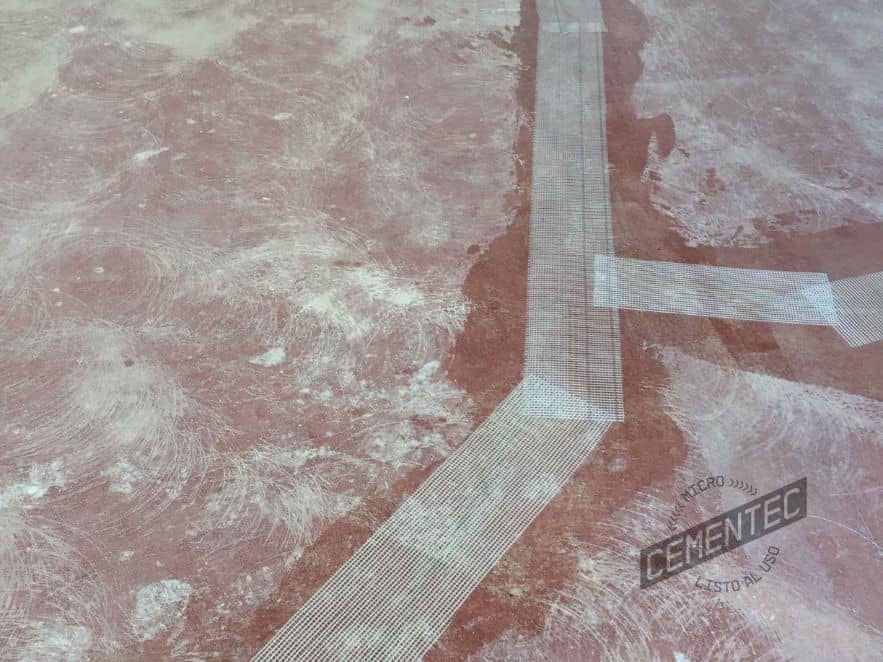
Microcement, despite being a highly valued coating option, is not free of challenges. The longevity of this material depends on correct identification and treatment of the causes that cause its imperfections. Next, we introduce solutions for the most common challenges that can compromise the quality of microcement.
Common problems vs. solutions
| Common problems | Solutions |
| Structural movements. | This is the most complicated problem to solve, although it is true that, with the passage of time, the structures settle almost completely, reducing their movements. |
| Poor prior preparation | Before microcement application, previous surface as to be perfectly anchored.It is essential to fill and seal any cracks present, but it is also crucial to identify and treat the origin of the movements that caused them to avoid future cracks. |
| Errors during application | Always apply the microcement in a very thin layer, otherwise the product may crack on the surface.● If due to application on an unsuitable substrate, the microcement may need to be removed and reapplied correctly. |
| Previous surfaces instability | Before applying microcement, make sure the base is level, clean and free of moisture.● If the microcement has already been applied and presents problems, it may be necessary to remove the coating, properly prepare the base and reapply the microcement. |
How to prepare the base where the microcement is applied and treat its cracks?
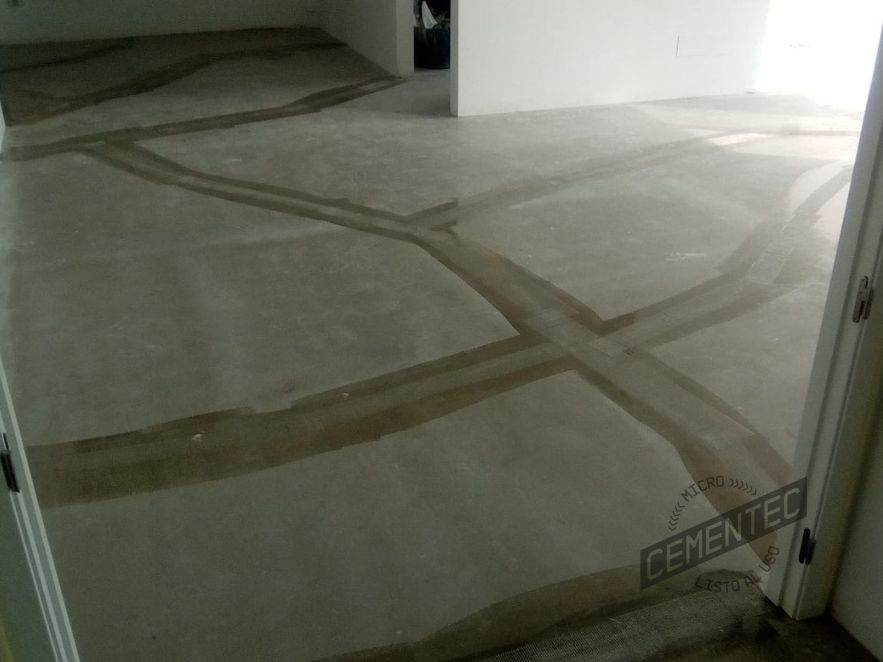
Previous preparation plays a fundamental role in preventing and treating possible fissures. Here we offer you a guide to adapt the previous surfaces and effectively treat their cracks.
Surface cleaning
Before starting, make sure the surface is free of dust, grease and other debris using a broom or vacuum cleaner.
Previous surface analysis
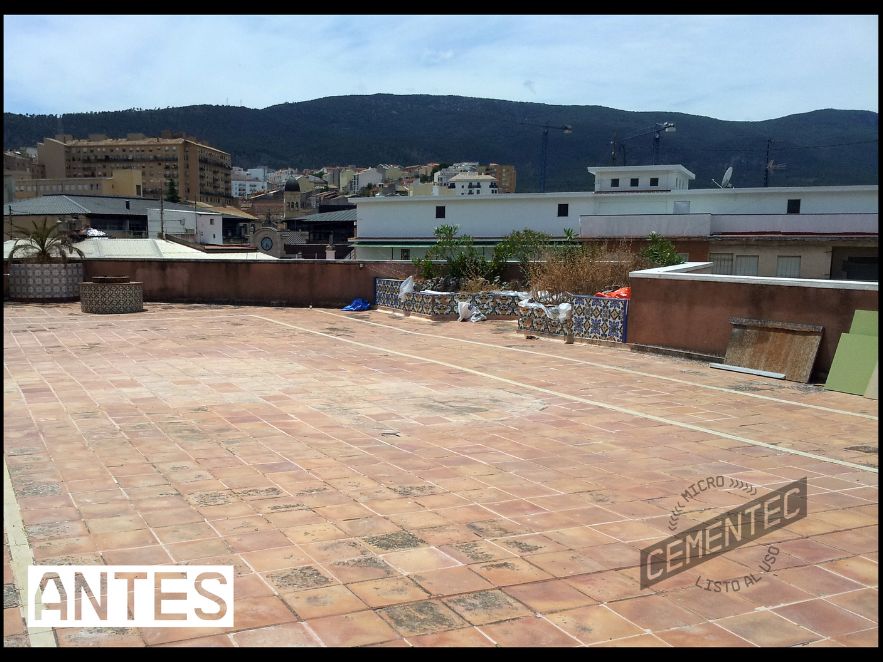
Examine the surface; This must be perfectly level and without incidents that could affect the application of the microcement. Locate, if there are any, possible cracks to repair them beforehand.
Fissures reparation
If you find any fissure of considerable size, you should fill them and “sew” them with a special mixture of epoxy + fiber net, and let them dry. If superficial cracks are found throughout the previous base, it is recommended to reinforce it by applying fibre mesh and epoxy over the entire surface.
Drying and curing
Once repaired, it is vital that these areas are well dry before starting to apply the ready-to-use microcement.
Post review

If possible, it is recommended to repair the supporting bases weeks before applying the microcement, to analyse the result of the repair, and observe if subsequent cracks have appeared. If so, proceed to repair it again.
Conclusions about fissures in microcement and their treatment
Finally, the microcement, renowned for its style and durability, it is not without its challenges, cracks being one of the most obvious. The causes behind these cracks can vary from poor prior preparation and structural movements to errors in application. Addressing each crack requires careful analysis to identify its cause and apply the most appropriate solution.
The repair process is essential not only to prevent the appearance of these cracks, but also to repair them and offer general protection to the microcement. Therefore, if you are facing challenges with your coating, it is advisable to consult experts in the application of ready-to-use microcement. With informed management and preventative measures, homeowners can ensure that the beauty and strength of ready-to-use microcement lasts over time.
Did you find this article about fissures in microcement interesting? Share your opinions on our social networks and send us your recommendations or results after application.

